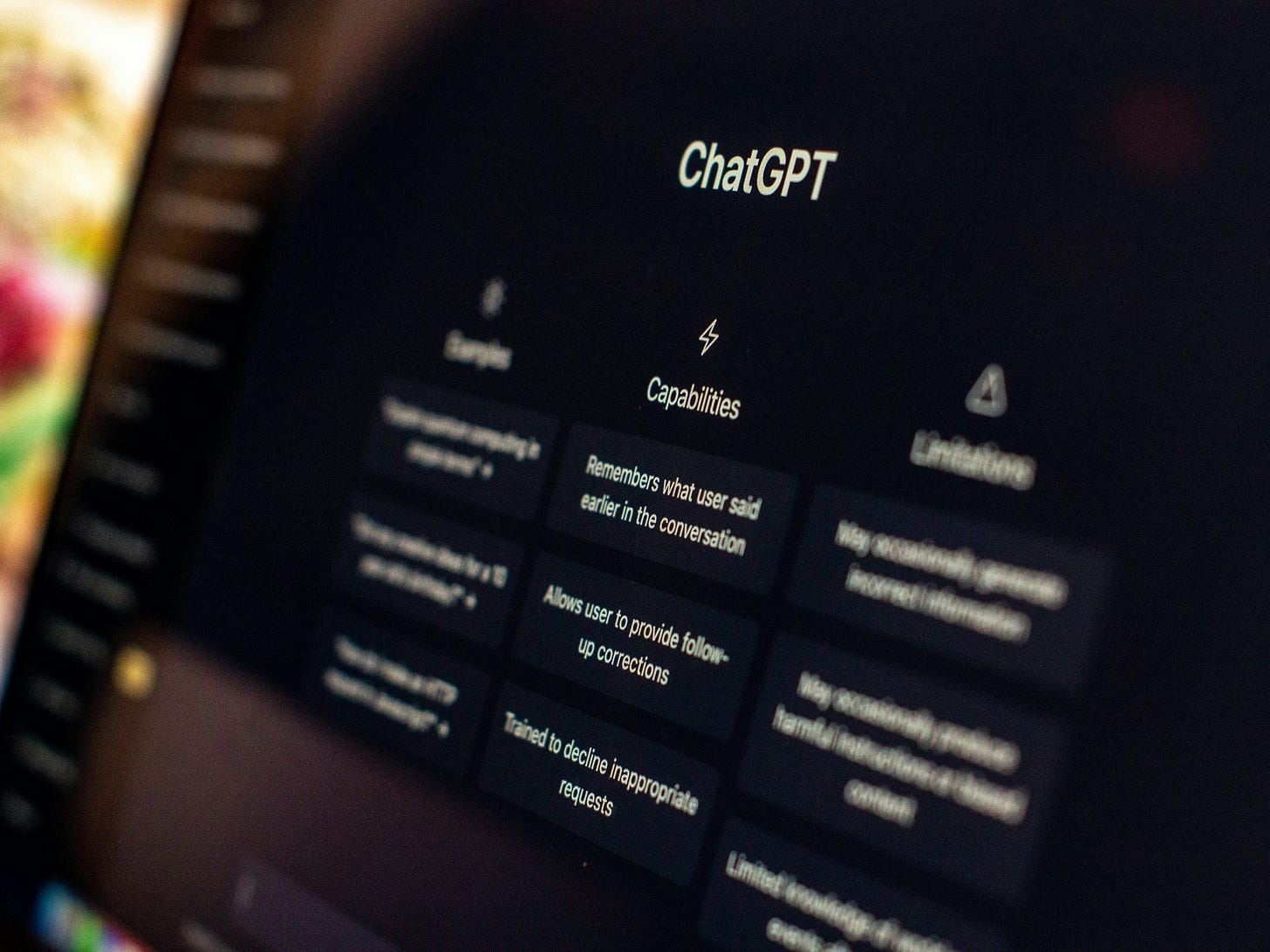Artificial Authenticity: Why Founders Can’t Fake It With AI
Why does everyone now sound like a robot?!
Sometimes I just don’t get what’s going on with the world.
Everywhere I look, self-proclaimed “authentic” entrepreneurs are telling their followers two things in the same breath:
“Authenticity is everything in business.”
“You should be using AI for all your content.”
Do they hear themselves?
AI literally stands for Artificial Intelligence. Artificial = fake. Authentic = real.
How have we managed to convince ourselves that outsourcing our thoughts, voice, and brand to an algorithm is the new definition of being “authentic”?
I decided that I have to investigate how on earth we got here, what the science actually says about authenticity, and why entrepreneurs who lean too heavily on AI risk eroding the very trust they’re trying to build.
The Rise of Artificial Authenticity
The authenticity craze isn’t new. Research shows that authenticity is one of the top traits audiences look for in leaders. A 2021 study published in Frontiers in Psychology found that authentic leadership not only improves employee trust but also boosts engagement and creativity in teams.
Social media made “authenticity” a currency. Founders who posted raw, unpolished moments gained traction against brands hiding behind glossy PR. Consumers wanted “the real you.”
But here’s where it went wrong: instead of actually doing the work of showing up authentically, many creators started performing authenticity. Now, AI has turbocharged the fakery.
A founder can churn out 10 “authentic” posts a day written by ChatGPT, slap their name on it, and call it their truth. In fact, they probably have a prompt that they stole from someone else that helps them sound more “authentic”!
Why Fake Authenticity Doesn’t Work
From a psychological standpoint, humans are wired to detect when something feels “off.” Psychologist Carl Rogers, one of the founders of humanistic psychology, argued that authenticity is the alignment between a person’s inner world and their outward expression. When what you say doesn’t match what you feel or believe, people can sense it.
Neurological studies show that our brains react differently when something is perceived as genuine versus fake. For example, research from Oxford University found that when participants were told a painting was authentic, their brain’s reward centres lit up more strongly than when they were told the same painting was fake - even if they couldn’t visually tell the difference. This helps explain why when someone preaches authenticity but posts AI-generated captions, our brains instinctively flag the mismatch: it doesn’t feel real.
And the consequences are real. Edelman’s 2024 Trust Barometer found that 61% of people distrust content that feels AI-generated. Consumers and peers alike view it as lazy, unoriginal, and manipulative. For founders, that translates to weaker personal brands and fewer conversions.
The Entrepreneurial Dilemma
Entrepreneurs are under pressure to constantly produce:
Two posts a day for LinkedIn.
A carousel and reel for Instagram.
A newsletter.
A YouTube script.
The content hamster wheel is real. AI feels like somewhat of a lifeline - why not let a machine handle our stress, right?
But here’s the problem: when everyone uses the same tools, the output converges. The same phrasing, the same “thought leadership” posts, the same 7-tips-to-win-at-life structure.
You end up with a sea of sameness, or in most cases… just pure BS. And the irony? The founders screaming about “standing out by being authentic” are blending in harder than ever. And they just don’t see it. Because they’re masking the bad performance with artificial engagement too. (More on that another time I think!)
Worse still - founders don’t realise that they’re not just outsourcing the writing, they’re outsourcing their thinking too. If AI is generating your ideas, then whose voice is it, really? Not yours. And it’s certainly not authentic.
Practical Lessons for Founders
So, how do you navigate this tension? Here are four principles that actually work:
Use AI as a tool, not a voice.
Drafting an outline, summarising research, or generating alternatives? Fine. But if you copy-paste AI text as your “authentic” story, you’re just lying to your audience.Filter everything through lived experience.
Authenticity is rooted in your perspective. Start with your own stories, failures, and lessons, then use AI to clean up structure or enhance readability - not the other way around.Accept slower, better output.
Authentic content takes longer because it requires reflection. And that’s the point. If your content is indistinguishable from a thousand other AI accounts, you don’t have a brand - you’re a placeholder.Double down on formats AI can’t fake.
Podcasts, live streams, unedited video, speaking gigs, workshops. These formats show you in real time. They can’t be manufactured by a model.
The 4th one is my favourite, which is why I do so much of this content and I am adamant in doing in-person events. I can see who the truly authentic ones are.
And you will notice the ones who avoid this sort of content, because they don’t have real thoughts of their own.
Unless you can’t tell the difference between them and their AI avatar…
Zero to Something
This is Zero to Something - where we learn something every day.
Today’s lesson is simple: authenticity can’t be automated. AI is powerful, but it’s not you is it?! When entrepreneurs lean too heavily on AI to manufacture their voice, they risk erasing the very thing that makes them valuable: their lived experience, their perspective, their story.
When founders confuse volume with authenticity, they end up sounding like everyone else. Real trust comes from sharing your perspective, not a machine’s.
Recommended Resources
Book: Authentic Leadership by Bill George – foundational text on what real authenticity in leadership looks like.
Study: Edelman Trust Barometer 2024 – insights on consumer trust and how AI impacts it.
Podcast Episode: Authenticity BS - my Sniffing out the Bullsh*t episode addressing this issue with “authentic influencers”
Tool (ironically): Originality.AI – check if your content is falling into AI sameness. Use sparingly to audit, not outsource.


